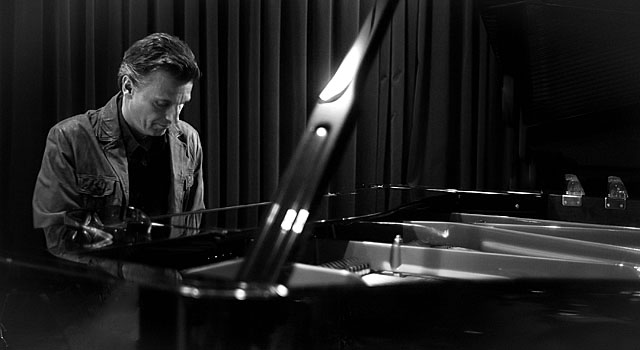A series about portraiture and life at large - Part II (Part I can be read here)
In photographing portraits it's all about capturing the person herself or himself. It's actually a long story, and I won't make it short. Instead I'll cut it into pieces so as to be able to entertain both of us with this subject over the coming weeks.
I have my own little secret statistic in that I find joy in each person who selects one of my portraits of them as their profile picture on Facebook. The reason is that you would only use a portrait of yourself if you really liked it. That's why.
I can't think of any other reason to take a portrait of a person than to make that person happy about him self or her self. Yet so many pictures are taken and put on display that mock others. Whenever somebody drops the popcorn on the floor or tries to eat a real big burger, “friends” consider it a photo opportunity and take a photo for mutual "amusement". There's a lot of that type of photographs around, and what's fundamentally wrong with them I'll get back to in a moment.
But also many professionals like to take incredible sharp photos of wrinkled people, or try to put sorrow or other emotions into people and situations, where such feelings actually does not exist. The result may be strong images, but not the type of images you would necessarily be proud of being in.
Hence there are plenty of opportunities to be caught in photographs that make "I never look good in photographs" a perfectly true statement.
Or "I never look like my self in photos," is another one I hear a lot.
So what is it that a photo has that make it a great photo – in your own and others opinion? It's when you are your self in that photo.
It took me a couple of years to figure out that when people asked "what do you do to look people so natural in your photos" and I said "nothing," that I was in fact carrying a secret.
What I do is actually nothing and that is the key to making it natural. I let people be them self, or at least create an atmosphere and a frame for you to be your self. And I'm interested. I don't have an agenda, I don't yell "smile" or haunt you around to get you to act. I just place people in the spot with the best looking light, and then I wait.
I wait for the person to fall into character and relax. And it always works, because being one self is the role we all know best. It's just a bad habit in photography that we seem to be expected to be something, or to be particular happy or smiling.
Now, being one self can be more than just that. What I often see is that a managing director for a large company must act as managing director, because that is the idea of the photo. Yet I want that person to be him self. Somehow it's possible to act as some profession – and be your self at the same time (whereas it's quite difficult to act as a managing director and be forced to smile at the same time). The beautiful contrast is often that the managing director is actually a real person.
The photo on top of the page is of the Danish fashion designer Mette Bjerregaard Nørkjær and is from a series we did an Italian magazine. As most professionals she doesn't see herself as a professional others should look up to, but merely as herself who happen to just do what she can easily do – after all, that is what makes most professionals just that; that they have a natural talent to do something. So we talked about this and went around at different locations and basically worked on the idea that she should be herself, but be it in a way the readers of that Italian magazine would expect a fashion designer to look. Not try to be somebody else, not trying to be less, not trying to be more. And that is how you do it.
It has a certain beauty to rest in one self, and if the light quality and photographic skills are in place, it's going to work well.
What most portraits fail in is the basic intention – that the photographer is not interested in the actual person; or has his own agenda such as making fun of or creates a tweaked reality by putting emphasis on contrast so even small wrinkles in a face becomes dominant.
Light is another element. If the light is nice, the face looks good. If it's too dark, the shadows are too strong, the colors are tweaked, even "Vogue Face of the Year" will look tired and fat. It's a fact. So the light is first priority and is always the photographer’s responsibility.
But the main thing is actually timing. Like there is a certain moment to capture in a newly wed couple cutting the wedding cake there is a certain moment in which a portrait becomes a portrait.
I'll get into more on portraits in the following weeks. But at least one thing you should have gotten from this, which is:
If it's a bad photo it's not you who's wrong, it's the photographer and his timing.
On the other hand, if it's a great photo, it's just you.
And it's true.

International singer-songwriter Ole Boskov at Jazzhus Montmartre in Copenhagen.
![]()
